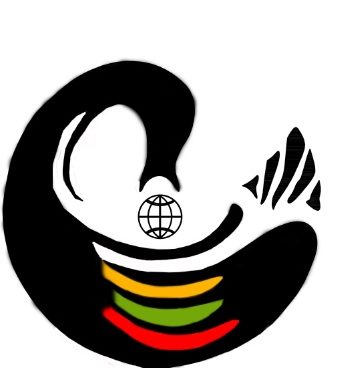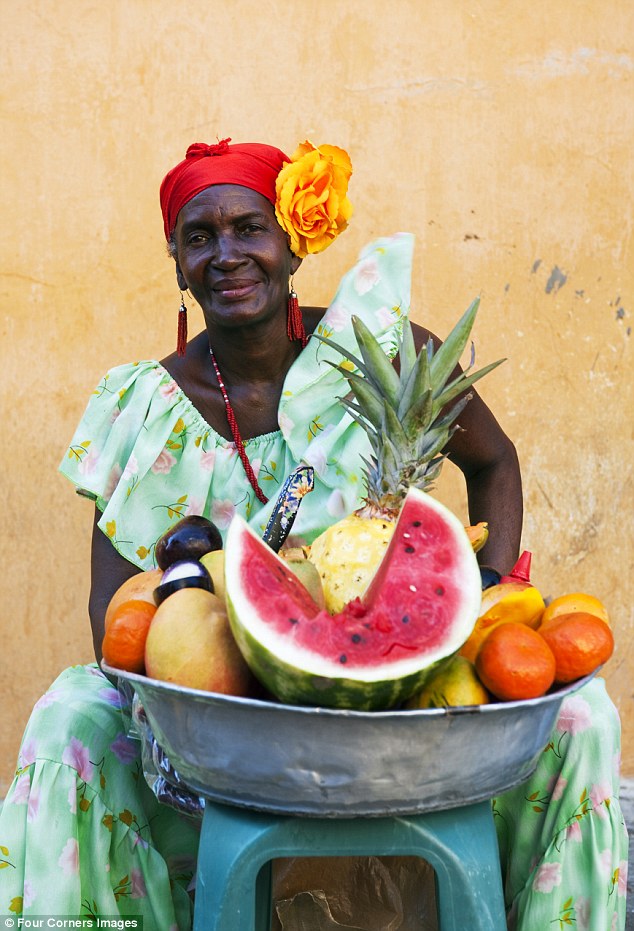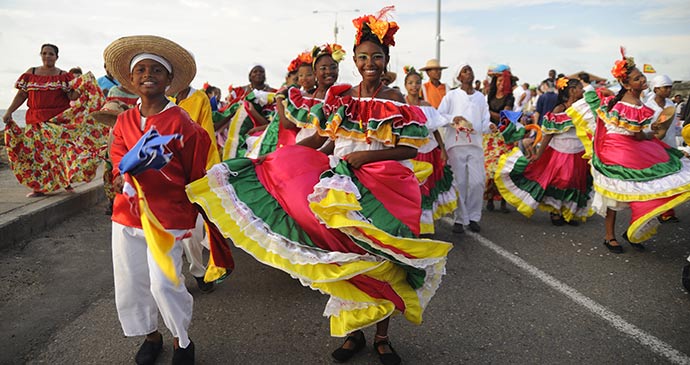Colombia, officially Republic of Colombia, is a Spanish country of northwestern South America. Its 1,000 miles (1,600 km) of coast to the north are bathed by the waters of the Caribbean Sea, and its 800 miles (1,300 km) of coast to the west are washed by the Pacific Ocean. The country is bordered by Panama, which divides the two bodies of water, on the northwest, Venezuela and Brazil on the east, and Peru and Ecuador on the south. The population is largely concentrated in the mountainous interior, where Bogotá, the national capital, is situated on a high plateau in the northern Andes Mountains. Colombia strongly reflects its history as a colony of Spain. It is often referred to as the most Roman Catholic of the South American countries, and most of its people are proud of the relative purity of their Spanish language. In Colombia much care has been taken to preserve the linguistic purity of the official language, Castilian Spanish, and there are close ties between the Spanish and Colombian language academies. In addition to Spanish there are more than 180 indigenous languages and dialects belonging to such major linguistic groups as Arawakan, Chibchan, Cariban, Tupi-Guaraní, and Yurumanguí. Approximately three-fifths of the population is mestizo. People of African and “mulatto” (mixed African and European) ancestry account for nearly one-fifth of the population and are mainly concentrated in the coastal departments and in traditional sugar-growing areas such as the Cauca River valley. Most Colombians are followers of Roman Catholicism. The church is deeply ingrained in Colombian society, usually taking a leading and authoritative role in the community and having great influence in government. Colombia has an abundance of nonrenewable resources, including reserves of gold, coal, and petroleum; its renewable resources include rich agricultural lands and its rivers, which have been harnessed increasingly for hydroelectric power. Gold deposits, particularly in the west-central section of the country, have been important since colonial times. The Cordillera Oriental has long been an important source of rock salt, marble, limestone, and, especially, Colombia’s highly prized emeralds; the country is the major world producer of emeralds.
Things to Do:
Visit the Lost City- The Ciudad de Perdida (the Lost City) is located deep in the jungle of the Sierra Mountains. This is a 4 day journey to reach hidden ruins that were built in 850 AD by the Tayrona people. The 4-day journey is epic. Be prepared to sleep on bunk beds, trek through the mud and cross rivers.
Visit surrounding islands- The islands off the Caribbean coast of Colombia are worth seeing. When visiting Cartagena, you’ll be offered a trip to Playa Blanca (white beach). Although beautiful, and popular for good reason, this beach is busy with day-trippers. For a more authentic trip consider one of the islands in the Rosario Archipelago or the San Bernardo Archipelago — Isla Grande, Isla Múcura, or Isla Tintipan.
Learn about Coffee- Colombian coffee is world-renowned, so it would be worth learning about the process, from bean to cup. You can find coffee tours and farms in the “Coffee Triangle” of Quindío, Caldas and Risaralda. A popular area for travelers who are interested in coffee is Salento in the Quindío department.
Hike Tayrona National Park
This national park is a main highlight of a trip to Colombia. Located on the northern shores, people flock here for the hiking, swimming, and sleeping in hammocks. The popular trip is to do an overnight hike to Cabo San Juan de Guia beach and spend the night in a hammock overlooking the sea.





